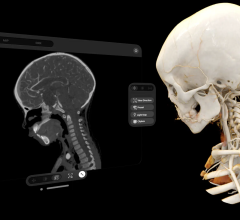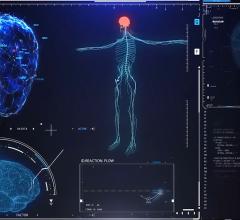By Dave Fornell, editor
With healthcare reform’s focus on information technology as the primary vehicle for change, there has been a massive increased interest in this area. Health IT software has taken center stage as healthcare facilities look to implement new Stage 2 Meaningful Use requirements. This year the Healthcare Information and Management Systems Society (HIMSS) annual meeting, held Feb. 23-27 in Orlando, Fla., drew a record crowd of 38,828 attendees and a record number of 1,233 exhibiting vendors.
While the focus of the show is for hospital IT departments, chief information officers and the overall healthcare IT enterprise, there were clear messages for what the future holds for radiology and cardiology. The biggest message, however, was the challenge to the traditional concept of each department and specialty having its own, isolated data silo for reporting, and image storage. So too is the idea that radiology will remain the gatekeeper to imaging under the expanding notion of enterprise imaging, where all patient images from every department will one day be available via the patient’s electronic medical record (EMR).
Radiology has traditionally been the keeper of imaging. With the expanded use of EMRs, Stage 2 Meaningful Use calls for radiology to enable some sort of remote viewing system to allow referring physicians or others accessing the EMR to view images and reports. This can be accomplished via remote image viewing or sharing systems that connect data in the radiology PACS to a patient’s EMR. However, this effort has been complicated at larger enterprises where nearly every department creates and stores patient images.
With the introduction of vendor neutral archives (VNAs), enterprise imaging will increasingly be taken out of the hands of radiology and move to the responsibility of hospital IT directors. The VNA enables true enterprise imaging, where all departments can contribute content, and IT operates an image management system to allow easy access and security. In this form, radiology will become just another department contributing images to the VNA.
This form of VNA enterprise was discussed in several sessions at HIMSS, with Cleveland Clinic being the poster child of how a large enterprise VNA can operate. The clinic now manages images and reports from more than 60 departments using its VNA.
Other trends at HIMSS included the integration of patient access to health information and images via patient portals to increase patient engagement, the rising use of clinical decision support and computerized physician order entry (CPOE), remote viewing systems for patient data and images, and the continued rapid expansion of software to enable use of mobile devices by physicians.
To see an example of how a VNA works for imaging and the trend of mobile patient monitoring technology, watch the video.



 May 01, 2024
May 01, 2024 








